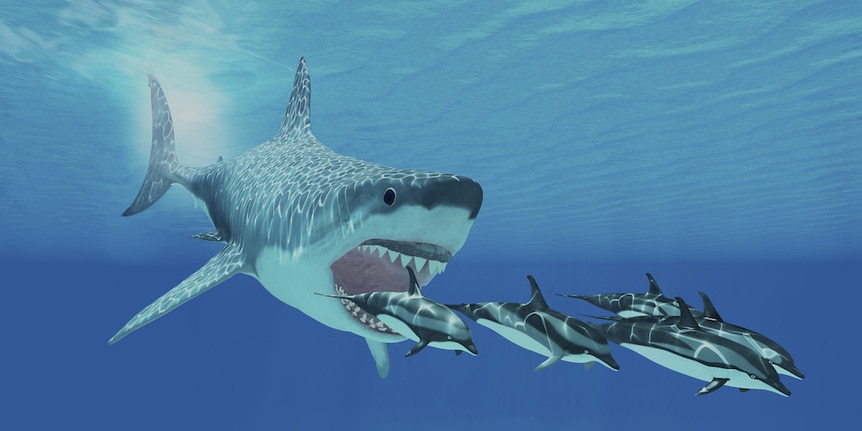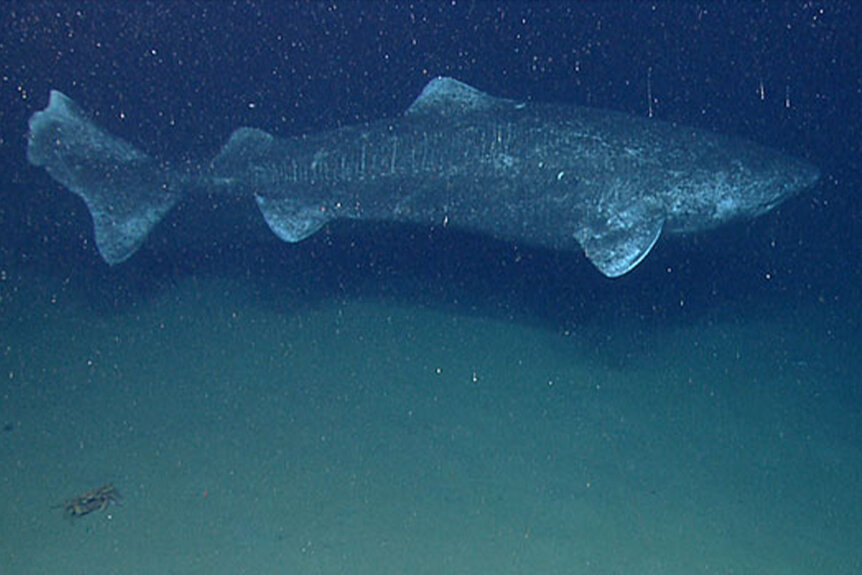The 6 Coolest Things You (Probably) Didn't Know About Sharks
Sharks are cooler than you might realize and, as we make new discoveries, they're getting cooler all the time.
Steven Spielberg’s 1975 summer blockbuster Jaws (now streaming on Peacock) transformed sharks from seldom-thought-of fish into one of the most celebrated movie monsters of all time. Over the last half-century, scientists have learned a lot about sharks. We know now that they are complex creatures and much more than just mindless killing machines.
Today, sharks grace the patterns of children’s clothing, bedsheets, and lunchboxes. They even have their own oft-repeated preschool song. They’ve reached a level of cultural saturation usually reserved for dinosaurs and popular cartoon characters and yet, the image that they are sea monsters remains. In the interest of learning more about them, so we might fear them less, here are six facts about sharks you may not have known.
For More on Sharks:
The 10 Weirdest (Coolest) Sharks of All Time
How Baby Hammerheads Grow Their Weird Tool-Shaped Heads
A South African Killer Whale Took on a Great White Shark One-on-One and Won
Fun Facts About Sharks
Sharks Have Existed Longer Than Trees
There aren’t really any sharp lines in evolution, so it’s difficult to say precisely when a certain type of organism first appeared, but we can say with relative certainty that the oceans had sharks before the land had trees.
About 450 million years ago, the first shark-like creatures show up in the fossil record. Those first sharks don’t appear to have teeth, but their tooth-like scales were preserved, revealing their existence. The first fossilized shark teeth show up about 410 million years ago and the first fish that would have looked like recognizable sharks appeared about 380 million years ago, right around the time the first trees were setting down roots.
Sharks really popped off about 359 million years ago, after the end-Devonian extinction wiped the ecological slate almost clean. About three-quarters of all species went extinct and sharks quickly rose to the top. As a group, sharks are also older than the dinosaurs, which didn’t show up until about 250 million years ago; the rings of Saturn, which are no older than 400 million years; and the North Star, which exploded to life 70 million years ago.
You Can Age Sharks by Counting Rings, Just Like Trees
Sharks are mostly soft tissue: skin, muscle, and cartilage. They have hard teeth, but they fall out and are replaced countless times throughout their lives, and they don’t carry a record of a shark’s total age. There are two places where age is recorded in most sharks: in the vertebrae and in the fin spines.
There, in the few bones most sharks have, the years can be counted in growth rings much like the growth rings of a tree. In the early years of a shark’s life, they grow more rapidly and the space between rings is wider. As they age, they grow more slowly and the rings become more condensed. Scientists can use that information to figure out not just how many years an animal has lived, but whether they are a juvenile or adult. The condition of the rings can also reveal information about resource shortages, environmental events, and illnesses.
Some Sharks Could Live for 500 Years or More
Greenland sharks live in the deep waters of the Arctic Ocean where it’s perpetually cold and dark. In that environment, far from any sunlight or warmth, the Greenland shark’s metabolism slows to a crawl. They are the slowest moving fish ever recorded and that tendency toward leisure extends to their biology.
It takes roughly 150 years for a juvenile Greenland shark to reach sexual maturity and they could live for 500 years or more. We don’t encounter them often, but when we do (usually as accidental bycatch during fishing expeditions) scientists have endeavored to figure out their age.
Unlike most sharks, Greenland sharks don’t have bony vertebrae or fin spines, and they can’t be aged in the usual ways. Instead, scientists approximate their age by carbon dating proteins inside their eyes. The oldest studied Greenland sharks have an estimated age of nearly 400 years, give or take a century.
Sharks Can Go Through Thousands of Teeth in Their Lives
Humans are saddled with two sets of teeth to last us a lifetime. The first set is small, relatively temporary, and is typically replaced throughout adolescence. The secondary teeth are permanent and, if they are broken or lost, your body won’t be making any replacements.
The thought of our teeth falling out is literally the stuff of nightmares, but for sharks it’s an everyday occurrence. Different species of sharks lose and replace their teeth at different rates, but some can go through 30,000 teeth or more in a lifetime. Those teeth are the primary way scientists learn about extinct species of shark, because there are tons of them scattered across the seafloor and anyplace that used to be the seafloor.
You Can Put Sharks in a Trance
The official name for this unusual behavior is tonic immobility, a temporary state of immobility that happens in a wide range of animals and has been likened to a kind of hypnosis. You can trigger it in a chicken by putting their beak to the ground and drawing a line in front of them. They’ll stay perfectly still, muscles relaxed and breathing regular, for about 30 seconds before they snap out of it.
Sharks also experience tonic immobility and researchers use it to subdue and calm sharks while they’re being handled. Some sharks go into a trance if they are flipped onto their backs. Others, like tiger sharks, do it if you stimulate the pores around their face. They’ll stay that way, completely relaxed, for about 15 minutes. It’s unclear why tonic immobility is common in animals on both land and sea, but it could play a role in mating or avoiding predation by playing dead.
Some Sharks Have Virgin Births
Most large animals reproduce sexually, and sharks are no exception, except for when they are. Sometimes, under rare conditions, sharks and other animals including some reptiles and birds, reproduce asexually through a process known as parthenogenesis.
It’s happened at least twice over the last few years, first at the Cala Gonone Aquarium in Italy, when a smoothhound shark gave birth without any contact with a male. More recently, an epaullette shark at the Brookfield Zoo started laying infertile eggs every month, and then one of them hatched. The shark had been at the zoo for the previous three years and, during that time, had never shared a tank with a male.
Sharks have proven time and again, through an evolutionary track record hundreds of millions of years strong and an impressive array of modern adaptations, that they’re in it for the long haul. It’s a shark’s world, we just live here.
Watch Jaws, Jaws 2, Jaws 3, and Jaws: The Revenge, all streaming now on Peacock!



















































